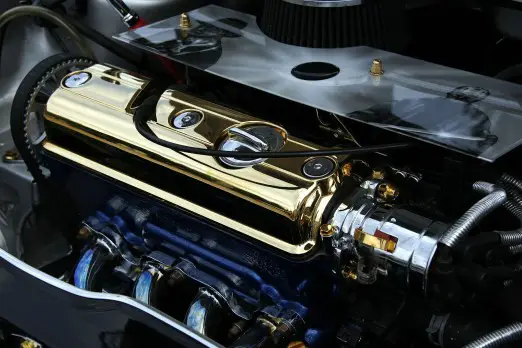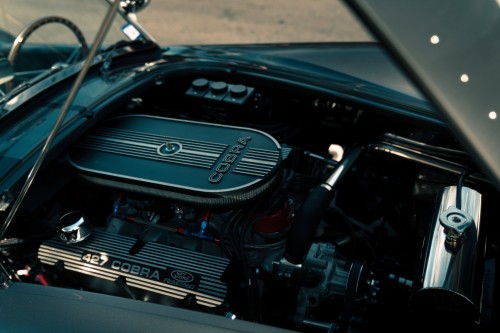When it comes to automobile maintenance, a vehicle’s performance may be affected by the type of gearbox fluid used. Often at the center of this decision-making process are two well-known automatic gearbox fluids (ATFs), Dexron II and Dexron III. By examining their compositions, applications, and performance differences, this article seeks to analyze the differences between Dexron II and Dexron III. We want to provide readers with the necessary knowledge to make well-informed decisions for the best possible transmission lifetime and health by dissecting the subtleties of various ATF compositions.
Importance of using the right ATF for optimal transmission performance:
For any vehicle to have the best possible transmission performance, it is essential to use the appropriate Automatic Transmission Fluid (ATF). ATF performs a variety of vital tasks for the gearbox system, including heat dissipation, friction management, and lubrication. By encouraging seamless gear changes, lowering wear and tear, and prolonging the life of the whole transmission system, the proper ATF composition is designed to fit the unique requirements of each transmission. Failing to utilize the necessary ATF may result in reduced efficiency, more heat production, and irreversible damage. Owners of cars must follow manufacturer guidelines to ensure smooth functioning of the gearbox and maintain the general health of their vehicles.

Understanding Dexron ATF:
General Motors’ introduction of Dexron ATF transformed automated gearbox fluids with the goal of improving gearbox longevity and performance. It is essential to comprehend how Dexron II and Dexron III evolved to do the best possible vehicle maintenance.
Components and Characteristics
Base oils and additives are carefully blended to create Dexron ATF. While additives aid in anti-wear, friction reduction, and thermal stability, basic oils offer fluidity and lubrication. The viscosity range of Dexron guarantees effective performance in a variety of operational environments.
Dexron I: Pioneering Automatic Transmission Fluid
Dexron I, which was developed in the 1960s to meet the unique requirements of early automatic gearbox systems, was a turning point in the development of gearbox fluid technology.
Dexron II: Advancements in Formulation
Dexron II improved upon its predecessor, which was introduced in the late 1970s, by resolving compatibility and oxidation stability difficulties with a larger variety of gearbox materials.
Dexron III: Fine-Tuning for Modern Transmissions
Dexron III modified the formula in the early 1990s to fit the needs of contemporary transmissions. It offered better anti-wear, increased oxidation resistance, and improved frictional qualities.
Frictional Properties and Smooth Shifting:
Friction modifiers from Dexron ATF are essential for effective shifting and avoiding excessive wear on important gearbox parts.
Industry Standards and Compliance:
The formulas of Dexron ATF adhere to industry standards established by entities such as the American Petroleum Institute (API) and the Society of Automotive Engineers (SAE). This commitment ensures that performance and quality standards are met.
OEM Recommendations and Compatibility:
Different automakers define what kind of ATF is appropriate for their cars. Dexron ATF complies with OEM requirements, guaranteeing wide compatibility and top performance across a range of car types.
Dexron Beyond III: Continuous Advancements
Later iterations of the Dexron formulation, such Dexron VI, keep expanding the capabilities of gearbox fluid technology. To handle new difficulties, industry input and ongoing research are important.
Dexron II Transmission Fluid:
Introduction to Dexron II Transmission Fluid:
An important development in automatic transmission fluid technology is the Dexron II Transmission Fluid. It was created by General Motors to replace Dexron I and addressed the unique compatibility and performance requirements of automatic gearboxes.
Formulation and Composition:
A specially blended blend of premium base oils and a specialized additive package make up Dexron II. The improved lubrication, heat dissipation, and protection of gearbox components are the goals of this formulation.
Key Properties and Specifications:
Improved oxidation stability, friction management, and wear resistance are just a few of the attributes that Dexron II offers that are designed to improve gearbox performance. Because the fluid satisfies certain viscosity requirements, it performs best under a variety of operating circumstances.
Applications and Compatibility:
Dexron II was engineered to work with a wide range of automatic gearboxes, especially those that were common in the 1970s and 1980s. Following the manufacturer’s instructions is crucial to guaranteeing compatibility with car models.
Advantages of Dexron II Transmission Fluid:
Improved protection against wear and tear, less frictional losses, and increased thermal stability were just a few benefits that Dexron II offered. Together, these characteristics support the transmission’s durability and effectiveness.
Disadvantages and Limitations:
Even while Dexron II significantly outperformed its predecessor, some of the more sophisticated capabilities included in later formulations could be absent. These restrictions were resolved in later Dexron models as automobile technology advanced.
Industry Standards and Dexron II:
Dexron II Gearbox Fluid satisfies the performance standards established by groups such as the American Petroleum Institute (API) and the Society of Automotive Engineers (SAE) by conforming to industry standards.

Dexron III Transmission Fluid:
Introduction to Dexron III Transmission Fluid:
Building on the achievements of its predecessors, Dexron I and Dexron II, Dexron III Transmission Fluid is a noteworthy advancement in automatic transmission fluid technology. General Motors developed Dexron III in response to the evolving needs of contemporary automatic gearboxes.
Formulation and Composition:
Dexron III is made using a cutting-edge additive package and premium base oils. Its formulation ensures excellent gearbox performance by improving lubrication, offering higher oxidation stability, and providing improved protection against wear and strain.
Enhanced Properties and Specifications:
Better anti-wear qualities increased frictional properties, and increased oxidation resistance are just a few of the improved attributes of Dexron III. Longer fluid life, improved thermal stability, and smoother shifting are all facilitated by these characteristics.
Applications and Compatibility:
Dexron III became widely used in a variety of car makes and models since it was made to work with a broad range of automatic gearboxes. However, to guarantee compatibility with certain gearbox systems, it is imperative to follow the manufacturer’s guidelines.
Advantages of Dexron III Transmission Fluid:
Compared to its predecessors, Dexron III offered a number of notable improvements, including longer-lasting fluid, better resistance to wear and corrosion, and increased performance across a range of operating circumstances. Its broad acceptance was facilitated by these characteristics.
Disadvantages and Limitations:
Even though Dexron III was a significant advancement, further developments in automobile technology resulted in the creation of even more sophisticated gearbox fluids. Later iterations, such as Dexron VI, addressed some of the drawbacks and added improved functions.
Industry Standards and Dexron III:
Dexron III Gearbox Fluid complies with industry standards established by the American Petroleum Institute (API) and the Society of Automotive Engineers (SAE). This compliance guarantees that the fluid satisfies predetermined performance standards.
Technical Differences Between Dexron II and Dexron III:
Viscosity and Frictional Properties:
Dexron II:
- Suitable for the gearbox systems of the time, moderate viscosity.
- Although there’s potential for improvement, frictional characteristics are optimized for seamless shifting.
Dexron III:
- improved viscosity properties for improved lubrication and fluid flow.
- enhanced friction characteristics that reduce wear on gearbox parts and encourage more seamless shifts.
Additive Packages and Anti-Wear Properties:
Dexron II:
- Basic additive package that addresses wear resistance and oxidation stability.
- good resistance to wear, however more frequent fluid changes could be necessary.
Dexron III:
- enhanced oxidation resistance provided by an advanced additive package.
- Improved resistance to wear, which helps to extend the lifespan of gearbox components.
Thermal Stability and Oxidation Resistance:
Dexron II:
- Sufficient thermal stability but potentially vulnerable to oxidation in high-stress scenarios.
- Sludge and varnish formation might result from fluid deterioration.
Dexron III:
- enhanced heat stability, which lowers the risk of fluid failure.
- greater resistance to oxidation, reducing the number of deposits that accumulate, and guaranteeing a cleaner gearbox system.
Compatibility with Modern Transmission Systems:
Dexron II:
- Originally intended for 1970s and 1980s television broadcasts.
- restricted suitability for contemporary gearbox materials and designs.
Dexron III:
- Designed to consider changing gearbox technology.
- Versatile and compatible with a wider variety of contemporary gearbox systems.
Choosing the Right ATF for Your Vehicle:
I. Introduction: Selecting the proper Automatic Transmission Fluid (ATF) is essential to preserving the best possible performance from your car. The protection of critical gearbox components, effective heat dissipation, and seamless gear changes are all made possible by the ATF.
II. Vehicle Compatibility and Manufacturer Recommendations: It is crucial to know the precise ATF requirements for your car. For manufacturer recommendations, see the owner’s handbook. Make sure the ATF you choose fits the requirements of the gearbox. Compatibility and performance may be ensured by adhering to Original Equipment Manufacturer (OEM) specifications.
III. Consideration of Driving Conditions and Usage Patterns: The performance of ATF is affected by various driving situations. Consider if your car is driven normally or whether it must deal with harsher situations like towing or stop-and-go traffic. Climate is also considered, choosing an ATF viscosity suitable for the current weather.
IV. Fluid Standards and Specifications: ATF performance is guaranteed by industry standards established by groups such as the American Petroleum Institute (API) and the Society of Automotive Engineers (SAE). Make an educated decision by being familiar with certain ATF standards, such as Marcon and Dexron.
V. Compatibility with Transmission Systems: Take compatibility with both more recent and legacy gearbox systems into account. While satisfying the demands of contemporary transmissions with innovative technologies, certain ATFs, like Dexron III, are made to be backward compatible, enabling their usage in older automobiles.
VI. Potential Risks of Using the Wrong ATF: Negative performance, damage to the gearbox and even warranty problems might result from using the incorrect ATF. Following suggested specifications is essential to preventing these dangers and extending the life of your car’s gearbox.
VII. Fluid Change Intervals and Maintenance: Maintaining optimal ATF performance requires routine fluid changes. By keeping an eye on fluid levels and adhering to regular maintenance intervals, gearbox problems linked to low or contaminated ATF may be avoided, resulting in smooth operation.
Frequently asked questions:
Can I utilize Dexron III rather than Dexron II?
In most cases, Dexron II may be swapped out with Dexron III in a vehicle.
What may be utilized in place of Dexron 2?
Dexron II is frequently replaced in numerous automobiles with the backwards-compatible Dexron III.
What is meant by Dexron 2?
Dexron II is an automatic transmission fluid formulation created by General Motors for use in vehicles, primarily produced during the 1970s and 1980s.
What is the purpose of Dexron 3?
General Motors created an automated gearbox fluid called Dexron III with the goal of improving lubrication, oxidation stability, and anti-wear qualities for better gearbox performance.
Conclusion:
In conclusion, for the best possible vehicle performance, selecting the proper automatic gearbox fluid (ATF) is essential. Vehicle owners may guarantee the lifetime and effectiveness of their gearbox systems by following manufacturer recommendations, considering driving circumstances, and being aware of fluid requirements. Making wise choices when choosing ATF is crucial since it enhances the vehicle’s overall health along with routine fluid changes and attention to maintenance schedules.

